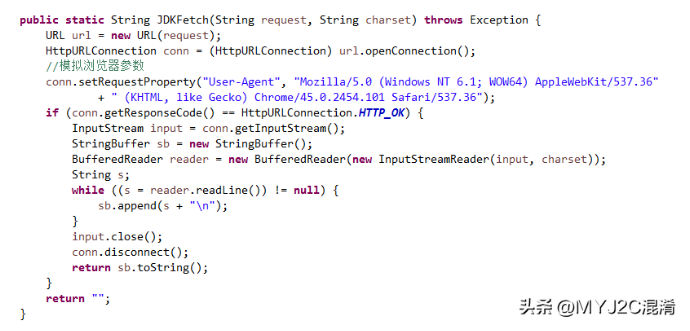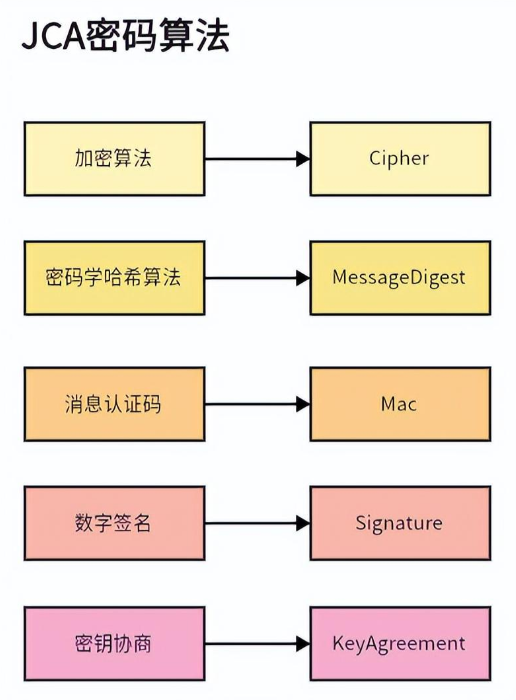Java异步编程(5种异步实现方式详解)
JAVA面试经常会问到:异步操作?什么是异步?与同步有什么区别?Java异步的是如何实现?有哪些异步实现方式?下面我一一来详解异步@mikechen
什么是异步?
首先我们先来看看一个同步的用户注册例子,流程如下:

在同步操作中,我们执行到插入数据库的时候,我们必须等待这个方法彻底执行完才能执行“发送短信”这个操作,如果插入数据库这个动作执行时间较长,发送短信需要等待,这就是典型的同步场景。
于是聪明的人们开始思考,如果两者关联性不强,能不能将一些非核心业务从主流程中剥离出来,于是有了异步编程雏形,改进后的流程如下:

这就是异步编程,它是程序并发运行的一种手段,它允许多个事件同时发生,当程序调用需要长时间运行的方法时,它不会阻塞当前的执行流程,程序可以继续运行。
在聊完异步编程后,那么我们一起来看看Java里面实现异步编程究竟有哪些方式呢?
一、线程异步
在 Java 语言中最简单使用异步编程的方式就是创建一个 线程来实现,如果你使用的 JDK 版本是 8 以上的话,可以使用 Lambda 表达式 会更加简洁。
public class AsyncThread extends Thread{
@Override
public void run() {
System.out.println("当前线程名称:" + this.getName() + ", 执行线程名称:" + Thread.currentThread().getName() + "-hello");
}
}
public static void main(String[] args) {
// 模拟业务流程
// .......
// 创建异步线程
AsyncThread asyncThread = new AsyncThread();
// 启动异步线程
asyncThread.start();
}
当然如果每次都创建一个 Thread线程,频繁的创建、销毁,浪费系统资源,我们可以采用线程池:
private ExecutorService executor = Executors.newCachedThreadPool() ;
public void fun() throws Exception {
executor.submit(new Runnable(){
@override
public void run() {
try {
//要执行的业务代码,我们这里没有写方法,可以让线程休息几秒进行测试
Thread.sleep(10000);
System.out.print("睡够啦~");
}catch(Exception e) {
throw new RuntimeException("报错啦!!");
}
}
});
}
将业务逻辑封装到 Runnable 或 Callable 中,交由 线程池 来执行。
二、Future异步
上述方式虽然达到了多线程并行处理,但有些业务不仅仅要执行过程,还要获取执行结果,后续提供在JUC包增加了Future。
从字面意思理解就是未来的意思,但使用起来却着实有点鸡肋,并不能实现真正意义上的异步,获取结果时需要阻塞线程,或者不断轮询。
@Test
public void futureTest() throws Exception {
System.out.println("main函数开始执行");
ExecutorService executor = Executors.newFixedThreadPool(1);
Future<Integer> future = executor.submit(new Callable<Integer>() {
@Override
public Integer call() throws Exception {
System.out.println("===task start===");
Thread.sleep(5000);
System.out.println("===task finish===");
return 3;
}
});
//这里需要返回值时会阻塞主线程,如果不需要返回值使用是OK的。倒也还能接收
//Integer result=future.get();
System.out.println("main函数执行结束");
System.in.read();
}
三、CompletableFuture异步
Future 类通过 get() 方法阻塞等待获取异步执行的运行结果,性能比较差。
JDK1.8 中,Java 提供了 CompletableFuture 类,它是基于异步函数式编程。相对阻塞式等待返回结果,CompletableFuture 可以通过回调的方式来处理计算结果,实现了异步非阻塞,性能更优。
CompletableFuture 实现了 Future 和 CompletionStage 接口, 并提供了多种实现异步编程的方法,如supplyAsync, runAsync以及thenApplyAsync。
下面我们使用CompletableFuture来实现上面的例子:
CompletableFuture<Long> completableFuture = CompletableFuture.supplyAsync(() -> factorial(number));
while (!completableFuture.isDone()) {
System.out.println("CompletableFuture is not finished yet...");
}
long result = completableFuture.get();
我们不需要显式使用 ExecutorService,CompletableFuture 内部使用了 ForkJoinPool 来处理异步任务,这使得我们的代码变的更简洁。
四、SpringBoot @Async异步
在@Async注解之前,使用多线程需要使用JDK的原生方法,非常麻烦,当有了@Async之后就比较简单了。
首先,使用 @EnableAsync 启用异步注解:
@SpringBootApplication
@EnableAsync
public class StartApplication {
public static void main(String[] args) {
SpringApplication.run(StartApplication.class, args);
}
}
自定义线程池:
@Configuration
@Slf4j
public class ThreadPoolConfiguration {
@Bean(name = "defaultThreadPoolExecutor", destroyMethod = "shutdown")
public ThreadPoolExecutor systemCheckPoolExecutorService() {
return new ThreadPoolExecutor(3, 10, 60, TimeUnit.SECONDS,
new LinkedBlockingQueue<Runnable>(10000),
new ThreadFactoryBuilder().setNameFormat("default-executor-%d").build(),
(r, executor) -> log.error("system pool is full! "));
}
}
在异步处理的方法上添加注解 @Async ,当对 execute 方法 调用时,通过自定义的线程池 defaultThreadPoolExecutor 异步化执行 execute 方法
@Service
public class AsyncServiceImpl implements AsyncService {
@Async("defaultThreadPoolExecutor")
public Boolean execute(Integer num) {
System.out.println("线程:" + Thread.currentThread().getName() + " , 任务:" + num);
return true;
}
}
用 @Async 注解标记的方法,称为异步方法。在spring boot应用中使用 @Async 很简单:
- 调用异步方法类上或者启动类加上注解 @EnableAsync
- 在需要被异步调用的方法外加上 @Async
- 所使用的 @Async 注解方法的类对象应该是Spring容器管理的bean对象;
五、Guava异步
Guava 提供了 ListenableFuture 类来执行异步操作
1.首先我们需要添加 guava 的maven依赖:
<dependency> <groupId>com.google.guava</groupId> <artifactId>guava</artifactId> <version>28.2-jre</version></dependency>
2.现在我们使用ListenableFuture来实现我们之前的例子:
ExecutorService threadpool = Executors.newCachedThreadPool();
ListeningExecutorService service = MoreExecutors.listeningDecorator(threadpool);
ListenableFuture<Long> guavaFuture = (ListenableFuture<Long>) service.submit(()-> factorial(number));
long result = guavaFuture.get();
这里使用MoreExecutors获取ListeningExecutorService类的实例,然后
ListeningExecutorService.submit执行异步任务,并返回 ListenableFuture实例。
Java异步编程小结
异步编程受到了越来越多的关注,尤其是在 IO 密集型的业务场景中,相比传统的同步开发模式,异步编程的优势越来越明显,希望以上介绍的5种Java异步编程方式对你有所帮助!




























